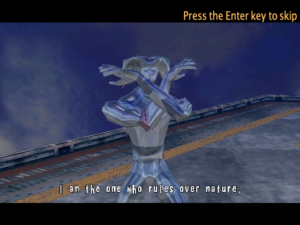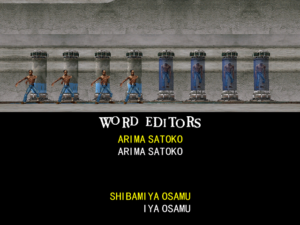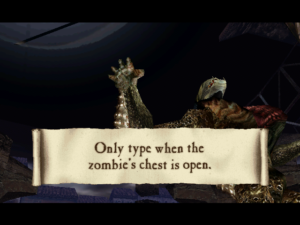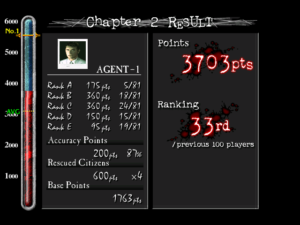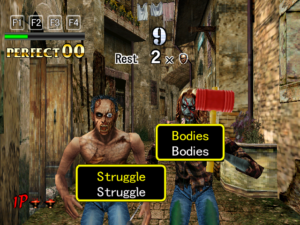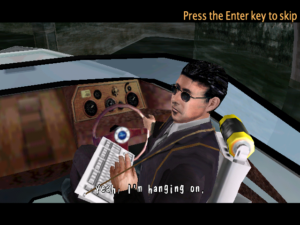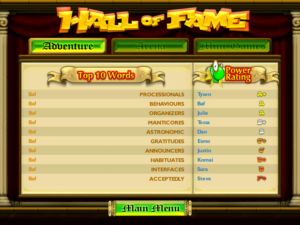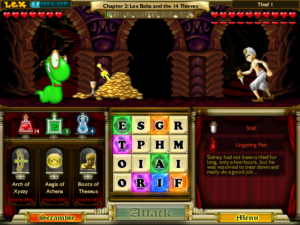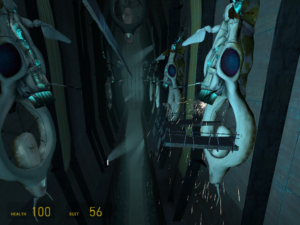Puzzle Quest: Distribution Channels
Puzzle Quest seems like the logical next step in our examination of nonstandard combat mechanics. Like Bookworm Adventures, it’s a RPGification of a casual game mechanic based mainly around pattern recognition, this time Bejewelled and other “match 3” games. Match 3 games are usually classified as puzzle games, even though they generally don’t contain what I personally think of as puzzles — which is to say, things where the player’s effort goes toward trying to figure out a solution. Presumably it’s because their lineage can be traced back to Tetris, and thus to polyominoes and other assembly puzzles.
But before I go into the gameplay, I’d like to talk about distribution channels. This is a game that’s available both on physical media and through online download, as is increasingly often the case. In the past, I’ve preferred to get games on discs where possible, but I’ve been rethinking this lately. On the one hand, physical discs give a greater illusion of permanence, which is important to those of us who like to play old games. There are discs on the Stack that I’ve had for more than 15 years. I don’t think I still have any downloadable installers that old on my system (and yes, such things did exist back then, mainly for shareware titles), nor the means to re-download them from their now-mostly-defunct publishers. On the other hand, my still-green experiences with long-distance moving have taught me how easy it is for physical objects to get lost, and Steam is making downloads seem like a more solid prospect, by making downloads from multiple publishers available under a single account that you’re less likely to forget about, and by being less likely to go out of business soon than a single indie publisher.
I started using Steam only very recently, and basically out of impatience: the one software retailer 1Software retailers just aren’t as dense in San Francisco as they are in Manhattan. Before the move, there were four within my customary orbit. within easy walking distance of my apartment didn’t have the Orange Box in stock, and I wanted to play Portal right away. And since the Orange Box was going to require “activation” through Steam even if I bought it retail, there seemed little harm to it. (I’m not happy with “activation”, but I’m willing to tolerate it on the assumption that I’ll be able to download a crack if Steam goes out of business.)
Now, Puzzle Quest can be obtained through Steam, but also through other online distributors. So it clearly doesn’t require Steam activation (although for all I know the Steam version might require activation anyway; if the process is fast and automatic, you wouldn’t necessarily notice it happening). Still, I chose Steam, mainly because I would otherwise face the inconvenience of creating an account on some other system. And when you think about it, that includes most online stores where you could buy the physical-media version. So Steam is basically the iTunes model, providing enough convenience that you’ll use it in preference to other channels. I’m wary that they’ll abuse this power, like any DRM-enabled distributor seems to do eventually, but not wary enough to resist being sucked in.
| ↑1 | Software retailers just aren’t as dense in San Francisco as they are in Manhattan. Before the move, there were four within my customary orbit. |
|---|
 Comments(2)
Comments(2)